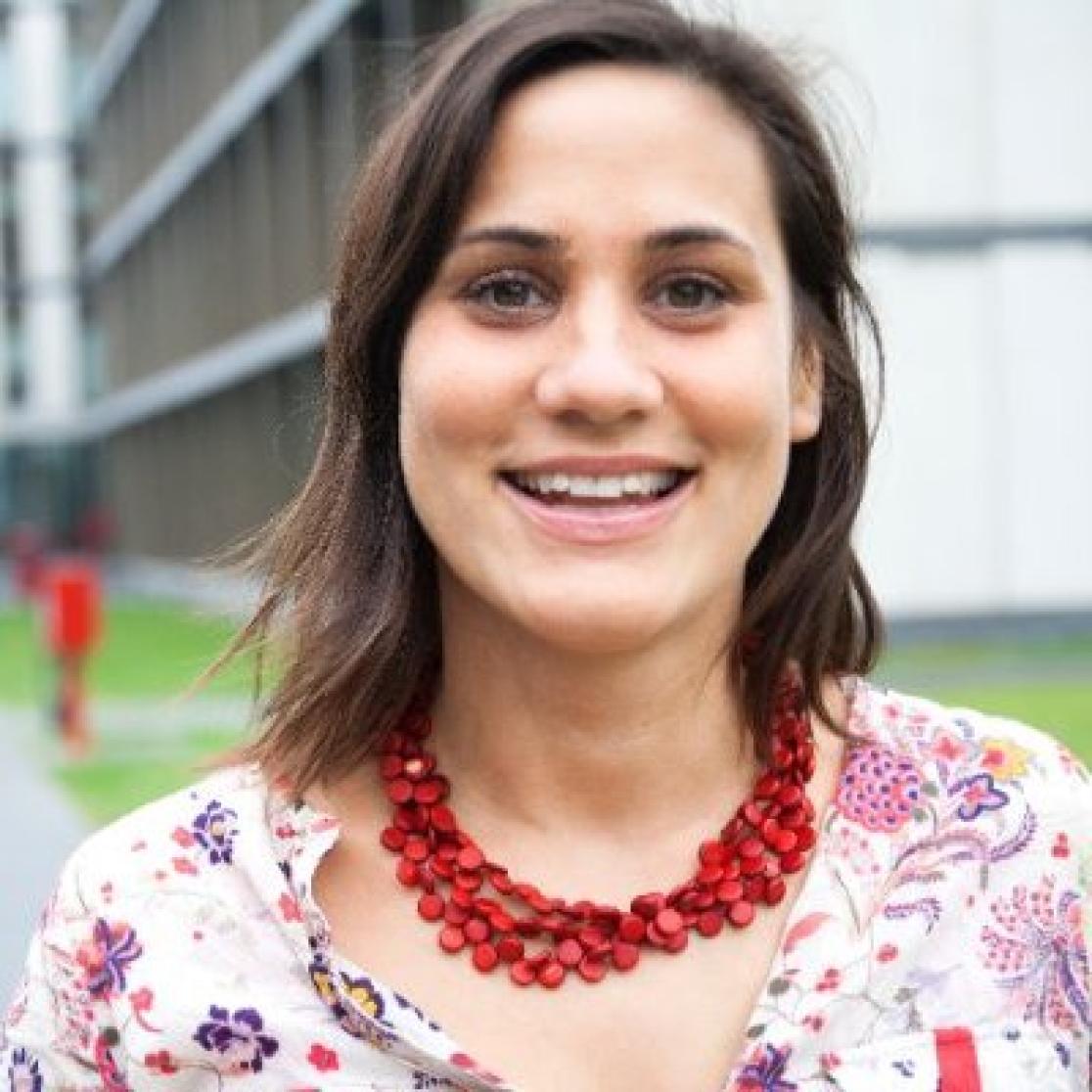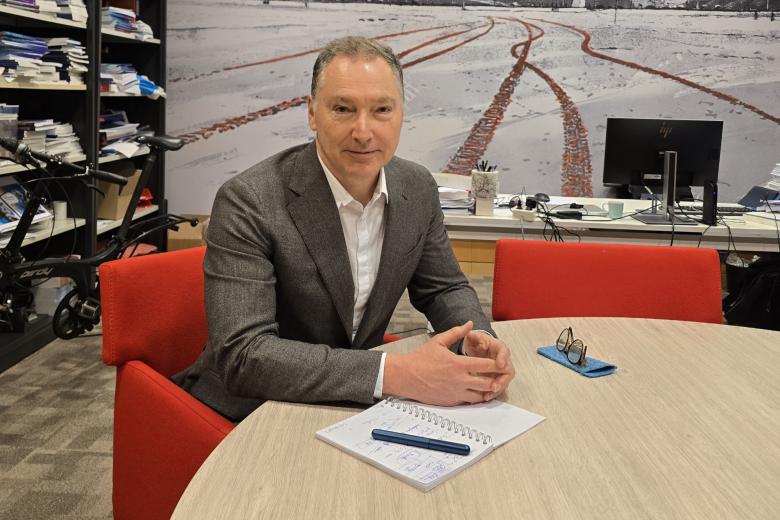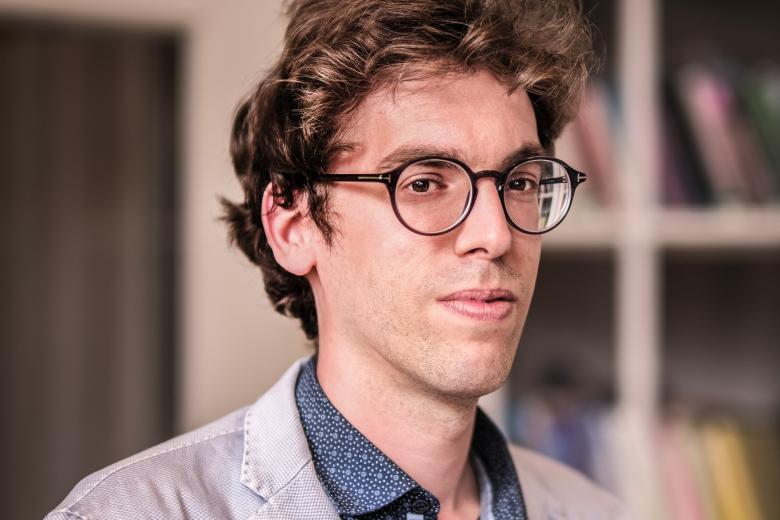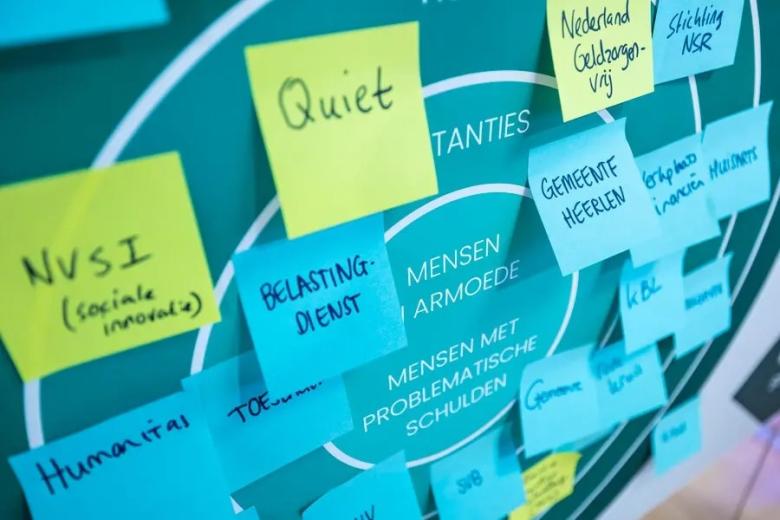When the plate is always half empty ...
Anyone who is left without the ability to perceive half of the world after a cerebral infarction may benefit from ‘non-invasive brain stimulation’. Researchers from Maastricht University have found indications for this in a small, experimental study.
When people only eat the food on the right half their plate, only shave the right half of their face or only talk to the people sitting on their right. And they also only look to the right if they want to cross the street. These are the problems experienced by people with visual neglect in a nutshell. It occurs most often after a cerebral infarction in the right hemisphere of the brain, after which the left half of the world is no longer ‘seen’. There is nothing wrong with the eyes of these people, but their brains simply no longer process information about the left half of their environment. “For many people, this is restored fairly quickly after the infarction, but for some it’s permanent”, says Teresa Schuhmann from Maastricht University. “Some people can learn ways to work around that neglect, for example, by consciously turning their heads to the left. Or they always put a colourful pen on the left side of a page and force themselves to look to the left all the way to the pen. But for some people, that’s not feasible.”
Attention on attention
Schuhmann and her colleagues are researching a wide range of brain phenomena in Maastricht, including the inhibition of aggressive behaviour, with the help of non-invasive brain stimulation. But attention is also an important area of research. How can you be looking at someone, but have your attention elsewhere? Why can you stay focused on a conversation in a loud room? “We’ve been able to improve the attention of test subjects using brain stimulation, but also to weaken it. To do this, we place an electromagnetic coil against the head, for example, in an area of the attention network. In this way, you can use magnetic impulses to reinforce a brain area or to temporarily switch it off.” If you do that once, the effect lasts up to an hour or so. But if you do it for several weeks in a row, the effect can last for a few months. Currently, this technique is increasingly being used worldwide in the treatment of depression. Some people even live the rest of their lives symptom free. “It really changes something in the brain.”
Placebo pulses
For someone who studies attention, neglect is of course an interesting phenomenon. So far, Schuhmann has conducted research on seventeen people with neglect at the Adelante rehabilitation centre in Hoensbroek. They perform three tasks, such as: Put a dash in the middle of these horizontal lines. Or: Circle all of the bells on this sheet of paper, which also contains other symbols. Normally, the dashes are all placed on the right side of the lines and only the bells on the right half of the paper are circled. Then they are given weak electrical pulses through electrodes on their head, and in half of the cases these are ‘placebo pulses’ for control purposes. “So far, it looks really good. The test subjects perform the tasks much better and see much more on the left side. As a scientist, you don’t say ‘it works’ so easily. But we say that there is support for our hypothesis. So it’s also too early to apply it therapeutically. We might want to treat people in a subsequent study for a number of days in a row in order to achieve long-term effects. But in the long run, I can imagine that therapy will be supported with this kind of brain stimulation.”
Communicating neurons
What actually happens through this brain stimulation is the synchronisation of frequencies. Schuhmann explains, “We know that neurons communicate with each other in the brain, in certain rhythms. A lot of conversation between areas of the brain takes place when they pulsate in the same rhythm. We also know that the two halves of the brain communicate. If one half becomes weaker, the other becomes stronger. This is often good, but with attention it means that the other half wins and all of the attention goes to the right side, for example. We’ve discovered certain frequencies that are relevant to attention. By bringing the good half of the brain to a frequency of ten Hertz, we see that the frequency on the other side also improves, causing the attention to shift from right to left.”
Coping strategy as a solution?
If people can also learn to deal with their limitations, why not stop there? It works, right? “I think that a coping strategy will never be as good as a functioning brain. Imagine that the whole world on the left side doesn’t exist for you. Consciously turning your head takes time, for example, if you want to cross the street and sometimes that time just isn’t there.”
The researcher finds it very interesting to work with these patients, also because it offers the possibility of translating research that tries to understand the brain on a very basic level, quickly into a treatment for patients. “And most patients who participate in the research are very grateful and happy that they can help. They hope to achieve something for people who end up in the same boat in the future.”
Teresa Schuhmann (1979) studied Psychology in Maastricht and received her PhD in 2010 on non-invasive brain stimulation. Her dissertation was primarily about the brain areas involved in speech, where TMS (Transcranial Magnetic Stimulation) was used to influence the function of certain areas. She is involved in the further development of imaging techniques within the Cognitive Neuroscience department and works in the Brains Unlimited building at Oxfordlaan, where the high-quality fMRI scanners and other UM research labs are also located. "We are the only place in the world where TMS, fMRI and EEG research are simultaneously combined.”

Also read
-
Ronald Janse appointed as new dean of Maastricht University Faculty of Law UM
The Executive Board of Maastricht University is delighted to announce the appointment of Prof. Ronald Janse as dean of the Faculty of Law.
-
Massimiliano Simons awarded funding for innovative art–science project on hybrid plants
"Entangled Genes: Sharpening the Public Debate on Hybrid Plants” is a new artistic research project that aims to deepen societal reflection on genetically modified plants.
-
HIP makes government communication more human
The ELSA Lab Poverty & Debt is developing, together with HIP, a tool that makes letters easy to understand without compromising their legal validity. HIP stands for Clear, Intelligent, and Productive and was developed in collaboration with the Brightlands Smart Services Campus and PNA Group.